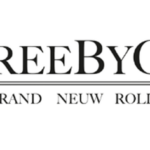You planned for 500 units. The market wanted 5,000.
Now you’re out of stock, the buyers are frustrated, and you’re scrambling to pull forward the next shipment.
On the other end, you forecasted big, and the product didn’t move. Now you’ve got a warehouse full of dead stock and a sales team under pressure to discount.
These moments cost more than just sales. They shake confidence across your supply chain and make planning feel like guesswork.
Whether you’re managing a global wholesale brand or buying for a retail network, the problem is the same: your forecasting is only as good as the information you have, and how fast you act on it.
That’s where smarter demand systems come in. In this guide, we’ll show you how to forecast with more confidence, fewer surprises, and the kind of accuracy that builds margin, not risk.
We’ll also show you how Brandscope helps brands, agents, and retailers stay aligned with real-time demand capture and future-focused ordering tools.
Table of Contents
Why Forecasting Is So Hard to Get Right
You can have great products, committed retail partners, and solid pre-season orders, and still get caught out by poor forecasting. Trends shift, and retailers go quiet. A style that looked like a hero during the indent falls flat once it hits the floor.
Other times, the opposite happens. A cautious order turns into a best-seller overnight, and you’ve got no stock left to support the momentum.
It’s not that brands and retailers don’t want to plan better. It’s that they’re often working with partial data, outdated spreadsheets, or systems that don’t talk to each other.
Sales teams have one version of demand. Ops teams have another. Retailers often know what they need, but don’t communicate it until it’s too late.
And when the tools can’t capture demand as it happens, your entire supply chain is reacting instead of planning.
That’s why improving forecast accuracy isn’t just about historical data. It’s about shortening the feedback loop between what’s happening in the market and what gets actioned internally.
7 Ways to Improve Demand Forecasting Accuracy
Forecasting doesn’t fail because you didn’t try hard enough. It fails because you didn’t see the demand early enough or act on it fast enough.
Here’s how to fix that.
1. Capture Demand in Real Time
Your data is only as useful as it is current. When retailers wait to reorder, or agents don’t pass feedback quickly, you miss your window to respond.
That’s why live demand capture matters. With Brandscope, retailers can place refills, future orders, or backorders the moment they realise a product is working, and that demand is recorded instantly at the SKU level.
This gives suppliers immediate visibility into what’s working, helping them plan with greater accuracy and confidence.
2. Shorten the Feedback Loop Across Teams
Forecasting improves when everyone works off the same page, not when sales is pushing one agenda and supply chain is looking at another.
Brandscope connects sales agents, brand teams, and buyers in a shared ordering environment. Everyone sees the same demand, in the same system, in real time.
This closes the gap between what’s selling and what gets manufactured, before you run out of time to act.
3. Align Forecasting with Supply Lead Times
You can’t sell what you don’t have, and you can’t make what you haven’t planned for.
Brandscope helps you forecast with confidence by automatically opening up future delivery months based on your lead times, whether you’re shipping, air freight, or manufacturing locally.
It means retailers can place forward orders with visibility. And your internal teams get the time they need to respond, not scramble.
4. Make Forecasting Easy for Retailers
Retailers don’t always think in terms of forecasts. But they do know when something’s selling fast and when they’ll need more.
That’s why Brandscope lets suppliers use text prompts at the product level. A simple message like “This item is in high demand. Please forecast ahead.” can be the difference between silence and an order for the right amount of units.
Remove the friction. Prompt the action.
5. Ditch the Spreadsheets
Spreadsheets work, until they don’t. Forecasts get lost in inboxes, versions get overwritten, and no one’s sure what’s been actioned.
Brandscope replaces static spreadsheets with a centralised ordering and forecasting system that integrates with your ERP. That includes SAP, Cin7, Dynamics, or whatever you use.
This means demand is not just seen. It’s structured, shared, and acted on.
6. Use Sell-Through to Guide Replenishment
Past sales data has its place. But if it’s your only input, you’re always reacting after the fact.
The smartest brands use real-time refill behaviour to adjust their in-season forecasts. Brandscope lets you track what’s moving and adjust your planning dynamically, before the opportunity slips.
7. Create One Source of Truth
Forecasting gets messy when teams rely on different tools, timelines, or reports.
Brandscope becomes the single place where forecasting, ordering, and supply conversations happen across your sales, ops, and retail teams in one shared system.
This removes version control issues and miscommunication, creating the clarity and coordination needed to make smarter decisions.
Our Demand Capture Tool in Action
Imagine you’ve just launched a new product on Indent. Retailers play it safe with conservative orders. But once the stock hits stores, it sells faster than anyone expected.
By the time retailers come back to reorder, the shelves are empty and the stock is gone. It’s a missed sales opportunity, as no one had time to respond.
With Brandscope, that same retailer can immediately act. They log in, see the remaining stock, and place a future demand signal, say 100 units. The order is captured and routed directly into your system, automatically aligned with your supply lead times.
Instead of scrambling, your inventory team is notified in real time. There’s enough lead time to plan production, organise shipping, and communicate delivery back to the retailer before momentum is lost.
Whether it’s a forecast or a backorder, the result is the same. Demand is captured at the source and turned into something actionable, with no spreadsheets, no guesswork, and no delays.
This is how you stay ahead of demand, not behind it. And it’s exactly what Brandscope was built to support.
Why Wholesale and Retail Need to Forecast Together
Accurate forecasting isn’t just a brand problem or a retail problem. It’s a shared responsibility.
Retailers are the closest to real-time consumer demand. They see what’s selling, what’s stalling, and what customers are asking for. But if that information doesn’t flow back to suppliers early enough, the opportunity is already gone.
On the other side, brands control the supply. They manage production timelines, logistics, and stock availability. Without visibility into future demand, they either overcommit or underdeliver.
The disconnect creates missed sales, rushed orders, overstock, and poor trust across the supply chain.
The solution isn’t more meetings or longer spreadsheets. It’s a shared platform that gives everyone visibility.
Brandscope creates that link. Retailers can submit forecasts or backorders as soon as demand becomes clear. Brands receive those signals in real time, with lead times automatically applied and internal teams alerted. Everyone works from the same data, and forecasting becomes a collaborative process, not a guessing game.
When wholesale and retail plan together, supply meets demand with fewer surprises and better results.
Take the Next Step to Forecast with Confidence
Forecasting will never be perfect, but it can be faster, smarter, and far more reliable.
The businesses that win are the ones that reduce uncertainty early. They capture demand as it happens, align it with lead times, and keep every team on the same page.
Brandscope gives you that visibility. It helps you turn every refill, forward order, and backorder into a forecast you can act on, powered by our B2B demand forecasting software.
By connecting real-time demand to your systems and teams, Brandscope helps eliminate delays, errors, and guesswork.
If you’re ready to move from reactive to proactive and start forecasting with confidence, get in touch with our team or book a demo to see how Brandscope can help.









